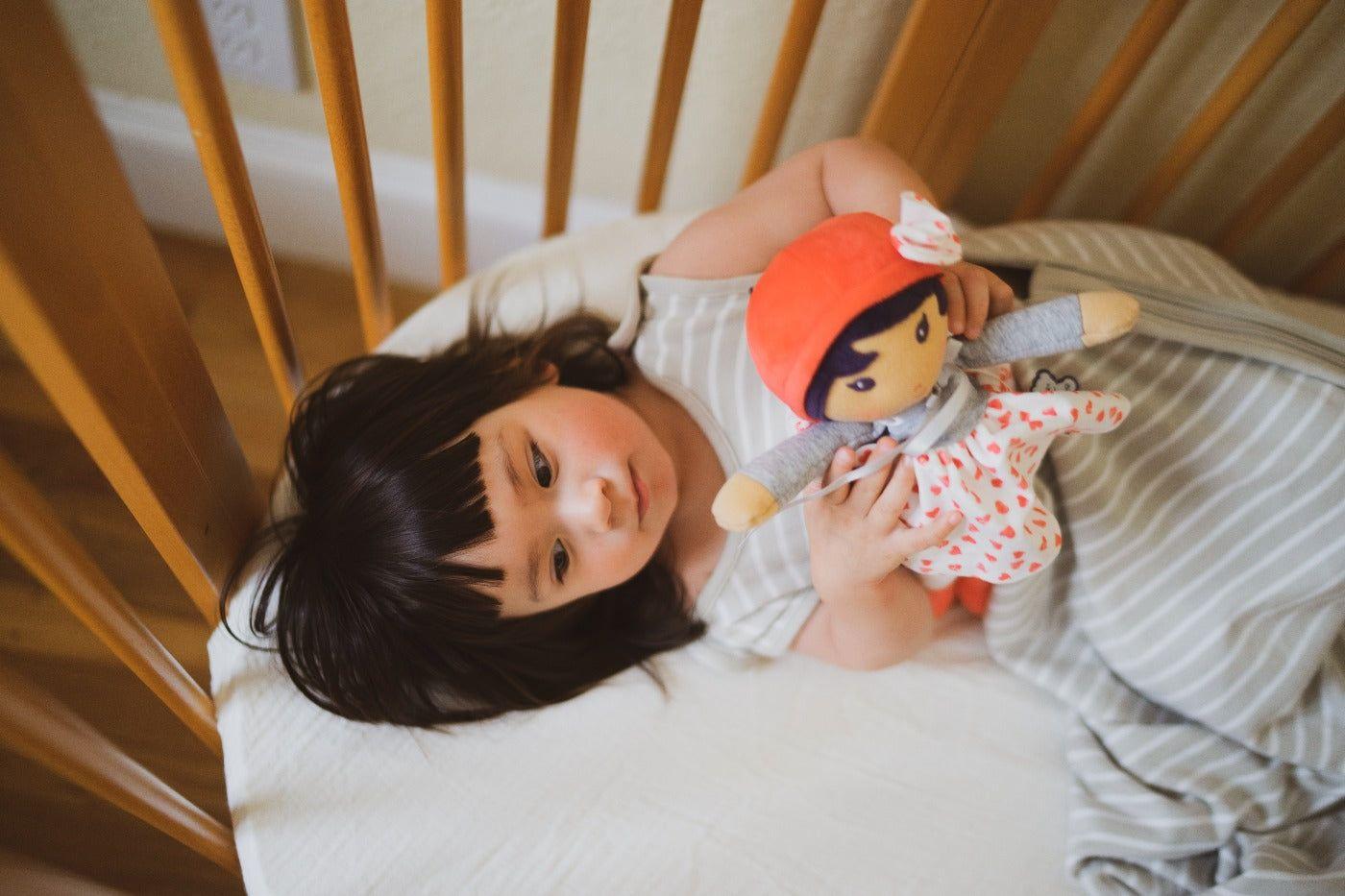TODDLER
Moving Your Baby Out of the Cot and Into a Toddler Bed
Tips on when—and how—to transition.

Written by
Dr. Harvey Karp

SHARE THIS ARTICLE
PARENT PICKS
Bestsellers
TODDLER

Written by
Dr. Harvey Karp

SHARE THIS ARTICLE
Bestsellers
Saying good-bye to your child’s cot is a big milestone, but a bittersweet one. There is no specific recommended age for transitioning to a toddler bed. Some parents do it as early as 15 months and others not until after 3 years.
Timing often depends on your child's physical skills—you will want to make the transition to a toddler bed before your intrepid tot masters the art of cot escape.
Over 90% of 18-month-olds sleep in a cot, but that gradually drops to about 80% at 2 years and 40% by 3 years of age.
After the first birthday, it is wise to put the mattress all the way down and make sure your child does not have toys or bumpers to climb on. The top of the cot rail should be above his collarbones. And always have a soft rug or carpeting on the floor of the room (with a nonslip undermat), because falls from that height can result in serious injuries.
Generally speaking, if your toddler seems like she is plotting her first cot escape, or you have caught her vaulting commando-style over the railing, it is probably time for her to move her to a toddler bed.
If you are pregnant, it is usually best to move your toddler out of the cot a few months before the new baby arrives (assuming your first child is old enough to be out of the cot). If it is already after the birth, you might keep your tot in the cot a while longer. But beware: if you move your toddler to a bed and the next week move the baby into her old cot, your toddler may feel jealous—like you gave her beloved possession to the new intruder!
When you are ready to make the switch, remember that tired, cranky toddlers are especially rigid and hate change. So, get your child used to the new bed by making it a routine place for quiet play or massage and napping during the day, times when she will be more flexible.
Your toddler will have an easier time with the transition when you continue other familiar sleep cues (like loveys, white noise, your bedtime routine, lullabies, and lavender).
To boost her enthusiasm about the switch:
Once in a bed, your toddler can pop out anytime she wants. So, you need to (1) childproof the room really well (including electric outlets, curtain cords, and sharp corners), and (2) keep her from roaming outside the room at night.
Use a gate to keep her in her room. If she climbs over it, you may need to spend a little time training her to stay in the room or even close the door. Say something like, “Honey, this is Mr. Gate! Mr. Gate will help you stay in the room…so at bedtime, after we sing and read and say night-night…then we will close Mr. Gate…and he will help you stay safe and happy in your room all night.”
If your little gymnast climbs over the gate, you may need to close the door and put a door knob cover on the inside of the door to her room.
Creating a bedtime routine can help your toddler wind down and learn they are expected to stay in bed. (For advice on routines, click here). You can also try Twinkle Interruptus, my favourite toddler bedtime "trick" based on patience-stretching. Good luck!
When did you transition your child to a toddler bed? How did it go? Got advice for parents getting ready for this milestone? Please share your experience in the comments section.
Disclaimer: The information on our site is NOT medical advice for any specific person or condition. It is only meant as general information. If you have any medical questions and concerns about your child or yourself, please contact your health provider. Breastmilk is the best source of nutrition for babies. It is important that, in preparation for and during breastfeeding, mothers eat a healthy, balanced diet. Combined breast- and bottle-feeding in the first weeks of life may reduce the supply of a mother's breastmilk and reversing the decision not to breastfeed is difficult. If you do decide to use infant formula, you should follow instructions carefully.